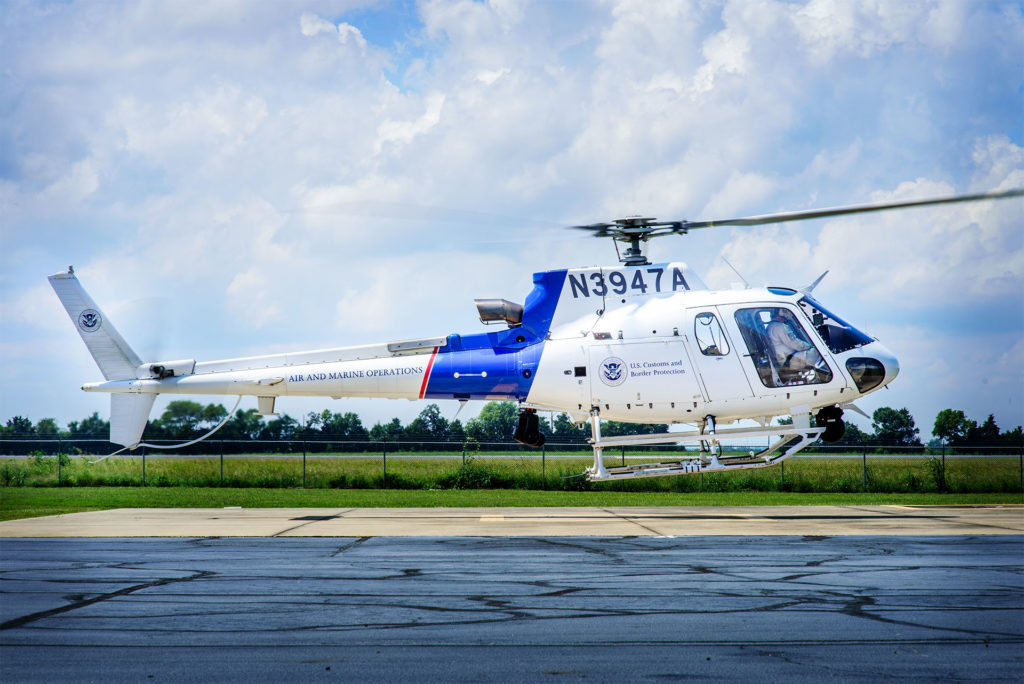Pandemic life
The challenges experienced by the helicopter industry in 2020 require little reminder. Many helicopter operators never stopped flying throughout the Covid-19 pandemic, performing their essential missions in an uncertain environment marked by ever-evolving sanitary challenges. Supporting these missions — those directly linked to the health crisis, such as transporting patients and vaccines, but also the everyday work of serving, protecting and transporting — remained an unwavering priority for Airbus Helicopters.
Whether delivering new helicopters or providing elevated levels of support and service — such as reinforced spare parts stocks, new distance learning solutions, and tailored technical support to design and recommend new Covid sanitization procedures and equipment — Airbus Helicopters teams strove to keep customers flying when it was needed most, a work that continues into 2021.
The new H145: Flying with first customers
The five-bladed H145 is in the air and flying with first customers after achieving key milestones in 2020. Following the European Union Aviation Safety Agency certification and first delivery of the new five-bladed H145, the helicopter received certification by the Federal Aviation Agency in November 2020, followed by certification from Transport Canada Civil Aviation early 2021.
The latest version of the proven H145 — which features a new bearingless five-bladed rotor system, allowing operators to benefit from a 150-kilogram (330-pound) increase in useful load — since then has been delivered to operators like the European helicopter emergency medical services (HEMS) operator DRF Luftrettung and the Belgian operator NHV, which already deployed the helicopter to the German Armed Forces in January, where it will be used for pilot training. Launch customer Norwegian Air Ambulance Foundation has also started flight testing their helicopters, exposing the model to the rough environment of a Norwegian winter.
H160: Gearing up for entry into service
With orders for every single mission segment that the innovative multi-mission twin-engine H160 was designed to address already under its belt, the H160 is gearing up for its entry into service this year with an undisclosed U.S. customer being the first to take delivery, shortly followed by All Nippon Helicopters in Japan.
The certification of the H160’s full flight simulator in August was an essential step on that path, and pilot instructor training has already begun training in Marignane, France. The second helicopter to be delivered to the U.S., ahead of final deliveries to PHI and Shell, will be used for a year-long route-proving program to enable the operator and the final customer to familiarize themselves with the type’s advanced features as they ready for offshore transportation missions.
H125: Protecting what matters
The Airbus H125 has continued to be a workhorse in the industry, and remains one of the top flown aircraft in the North American market for a variety of missions, notably law enforcement and utility. Last year, Airbus Helicopters Inc. delivered the first of 16 specially configured H125 helicopters to U.S. Customs and Border Protection (CBP). Airbus’s U.S. offices designed and implemented more than 30 specific Supplemental Type Certificates (STCs) for CBP’s new fleet to provide the necessary technologies and equipment that allow them to protect and serve communities around the country.
The H125 has also been a key resource in the large-scale wildfires that swept the Western U.S. in 2020. With its excellent performance, especially in hot environments and at high altitudes, the H125 is a reliable tool for utility operations that require versatility, maneuverability and reliability. As announced at last year’s Heli Expo, the H125’s performance will soon be increased with up to 190 kg of additional payload by making full use of the engine’s available power. Certification is expected in Q2 this year.
Flightlab sets its eyes on the future
Investing in innovation remains essential for Airbus Helicopters, as evidenced by the recently unveiled Flightlab, a key part of the company’s strategy to prepare the future. This platform-agnostic flying laboratory is exclusively dedicated to maturing new technologies that could later equip Airbus’s current helicopter range, future fixed-wing aircraft or (e)VTOL platforms.
The helicopter Flightlab follows on the wings of other Airbus flight labs, such as the A340 MSN1, used to assess the feasibility of introducing laminar flow wing technology on a large airliner, and the A350 Airspace Explorer, used to evaluate connected cabin technologies inflight. The Airbus Helicopters Flightlab will be used to test hybrid and electric propulsion technologies, as well as for exploring autonomy, and other technologies aimed at reducing helicopter sound levels and improving maintenance and flight safety. Flight tests started last April and will be pursued until 2022.
Support and services: always evolving to better serve customers
2020 saw additional customers relying on HCare support and service contracts to help improve aircraft availability, control budgets, stabilize costs and lower the administrative burden. Today 2,400 Airbus helicopters, representing 20 percent of the global fleet, are covered by a global support contract, which can be tailored to an operator’s unique needs. Recent additions hail from the United States, Thailand, Japan and Spain, among others. Customers represent a diverse set of mission segments, such as military, public services, governmental, emergency medical services and oil-and-gas.
At the same time, 1,500 helicopters are now sharing data with Airbus, which opens up access to dedicated analytics services that help customers optimize their daily operations. A new package of digital services specifically for Helionix-equipped helicopters has also been developed, aimed at increasing fleet availability, enhancing operational safety, and optimizing costs.

Always evolving and improving, Airbus Helicopters has likewise initiated a transformation of its training offer based upon feedback from customer satisfaction surveys in order to enhance the customer experience and better respond to their varying needs. Key elements of the transformation will include a streamlined training organization, new business models, tailored training plans, development of digital and local solutions, and reinforced flight operations support.









